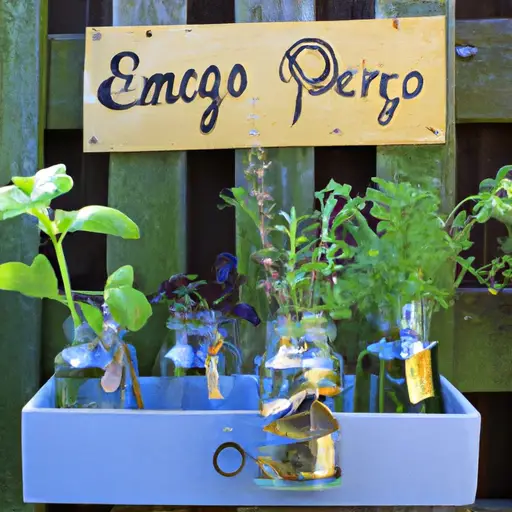Sustainable and Stylish: Embracing Eco-Friendly Practices in Container Gardening
In recent years, there has been a growing awareness of the importance of adopting eco-friendly practices in various aspects of our lives. From reducing single-use plastics to conserving energy, individuals are actively seeking ways to minimize their carbon footprint and create a more sustainable future. One area where this mindset has gained significant traction is container gardening. Container gardening not only allows individuals to indulge in their passion for plants and gardening but also offers an opportunity to employ eco-friendly practices. In this article, we will explore some innovative ways to embrace sustainability while creating a stylish container garden.
1. Choose Recycled Containers
One of the core principles of sustainable container gardening is using materials that have been recycled or repurposed. Instead of purchasing new plastic pots or containers, consider using old buckets, wooden crates, or even discarded furniture that can be transformed into unique plant holders. By giving these items a second life, you are contributing to reducing waste and minimizing your environmental impact.
2. Opt for Organic Soil and Fertilizers
Using organic soil and fertilizers is another essential aspect of sustainable container gardening. Organic soil avoids the use of harmful pesticides or synthetic chemicals that could potentially harm the environment or affect the health of your plants. Additionally, opting for composted organic materials as fertilizer not only nourishes your plants but also reduces waste by utilizing kitchen scraps and yard trimmings.
3. Practice Water Conservation
Water conservation is crucial in any form of gardening, but it becomes even more critical when dealing with containers due to limited water-holding capacity. Make it a habit to collect rainwater that can be used to hydrate your plants instead of relying solely on tap water. Another technique to minimize water usage is by grouping plants with similar watering needs together – this allows you to provide targeted hydration without wasting excess water.
4. Embrace Companion Planting
Companion planting involves strategically placing plants that benefit each other when grown in close proximity. This technique not only enhances the health and growth of your plants but can also help control pests naturally. For example, planting marigolds alongside tomatoes deters harmful insects, eliminating the need for chemical pesticides. By incorporating companion planting into your container garden, you are creating a balanced ecosystem while reducing the need for harmful chemicals.
5. Implement Integrated Pest Management
Integrated Pest Management (IPM) is an eco-friendly approach to pest control that focuses on prevention and minimal intervention. Instead of resorting to chemical sprays at the first sign of pests, try using physical barriers such as netting or introducing beneficial insects like ladybugs that feed on harmful pests. Regularly inspecting your plants and promptly removing any affected leaves or branches can also help prevent pest infestations naturally.
6. Utilize Vertical Gardening Techniques
Vertical gardening not only maximizes space but also adds a unique aesthetic element to your container garden. By utilizing walls or trellises, you can grow climbing plants like beans, cucumbers, or ivy in containers, reducing the need for excessive floor space. Vertical gardening allows for better air circulation around the plants and reduces the risk of disease by keeping foliage off the ground.
7. Incorporate Native Plants
Choosing native plant species for your container garden has various ecological benefits. Native plants are better adapted to the local climate and require fewer resources such as water or fertilizers compared to exotic species. They also attract native pollinators like bees and butterflies, contributing to biodiversity conservation in your area.
In conclusion, sustainable container gardening is a rewarding practice that combines creativity with eco-friendly principles. By repurposing materials, using organic soil and fertilizer, conserving water, practicing companion planting and integrated pest management, employing vertical gardening techniques, and incorporating native plants, you can create a beautiful and environmentally responsible container garden. Embrace sustainability and style in your gardening journey, and watch as your green thumb flourishes while making a positive impact on the planet.














